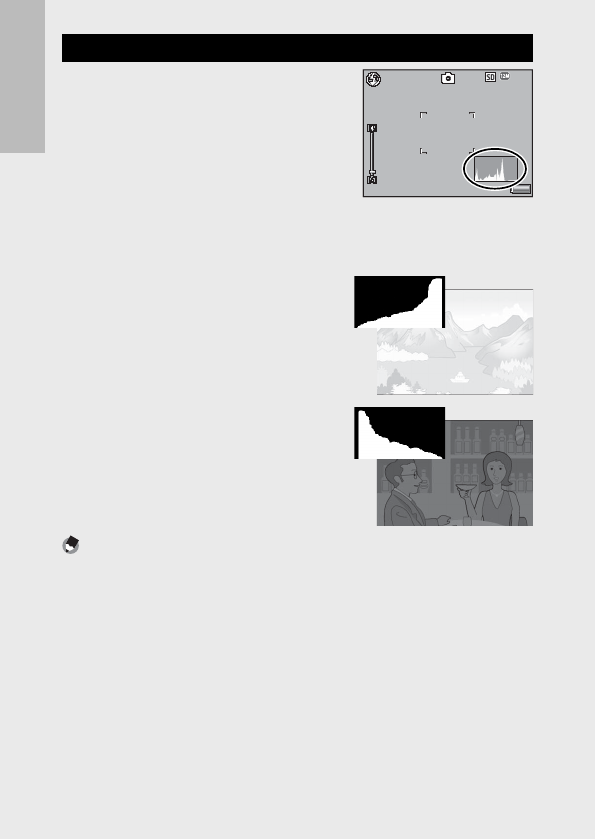
44
If you are using the camera for the first time, read this section.
About the Histogram Display
When Histogram is on, a histogram appears
in the lower right corner on the picture
display. A histogram is a graph indicating
the number of pixels on the vertical axis
and the brightness on the horizontal axis
(from left to right, shadows (dark areas),
midtones, and highlights (bright areas)).
By using the histogram, you can determine the brightness of an image
without being affected by the brightness around the picture display.
This also helps you correct for areas that are overly bright or dark.
If the histogram has only peaks on the
right side, this picture is overexposed
with too many pixels only for highlight
sections.
If the histogram has only peaks on the left
side without anything else, this picture
is underexposed with too many pixels
only for shadow sections. Refer to this
histogram when correcting the exposure.
Note -------------------------------------------------------------------------------------
• The histogram displayed on the picture display is for reference only.
• After taking a picture, you can correct its brightness and contrast by making
adjustments to the histogram (GP.70).
• Depending on the shooting conditions (use of the flash, dark surrounding light,
etc.), the exposure level indicated in the histogram may not correspond to the
brightness of the shot image.
• Exposure compensation has its limitation. It does not necessarily achieve the
best possible result.
• A histogram with peaks in the center may not necessarily provide the best result
to suit your particular requirements. For example, an adjustment is required if
you want to underexpose or overexpose the image.
• For information on how to correct the exposure compensation, see P.62.
4:
3 F
3 F4:3 F
4:3 F
9999
99999999
9999
4:
3 F
3 F4:3 F
4:3 F
9999
99999999
9999


















